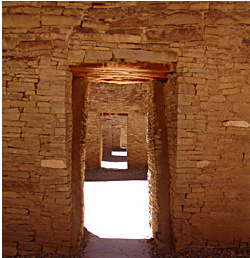Publication Date
7-1-2013
Abstract
This study uses a bioarchaeological approach to investigate the behavioral and social correlates of changes in skeletal properties during the Iron Age of central Italy. This was a period of demographic growth, increase in sociopolitical complexity, and social stratification. Early states were developing from simpler forms of social aggregation, and expansionistic, large-scale warfare was beginning. I analyzed the mechanical properties of Iron Age human skeletons (844 individuals) from 11 necropoleis belonging to the Oscan ethno-linguistic group (Samnites). The analysis of grave goods allowed for a division of individuals by status categories. Iron Age samples show an increase in stature compared to Neolithic times. This suggests an amelioration of the health and nutritional environments, but not all the social strata benefitted from the situation to the same degree. In the Orientalizing-Archaic (800-500 BC), males of higher status are taller, while in the Hellenistic period (400-27 BC) males show higher stature versus Neolithic times than females. Activity levels did not change significantly with the intensification of agriculture from the Neolithic to the Orientalizing-Archaic, possibly due to technological improvements. Mobility shows a continuing trend of decrease from the Neolithic throughout the Iron Age. Changes in male activity levels are present within the Iron Age, with an increase in male upper limb mechanical strength that may be related to agricultural intensification. Contrary to the expectations, the high-status males of the Orientalizing-Archaic period experienced a more mechanically stressful environment than low-status males, and were more terrestrially mobile. This may be related to the training of the elites for a military career. The analysis of humeral bilateral asymmetry, used as a proxy for weapon use, allowed for a reconstruction of the military organization. In the Orientalizing-Archaic, results are compatible with an elite army composed by aristocratic warriors, as expected in a chiefdom/paramount chiefdom level of sociopolitical organization. In the Hellenistic period, results are compatible with a conscript army, which is expected given the state society that Samnites developed by that time. The results for the Classic period (500-400 BC), which may have been important to untangle causal relationships between warfare and state formation, are not conclusive and deserve further investigation.
Keywords
Bioarchaeology, Iron Age, Italy, Biomechanics
Project Sponsors
Hibben Foundation / Office of Gradute Studies / Graduate Professional Student Association
Document Type
Dissertation
Language
English
Degree Name
Anthropology
Level of Degree
Doctoral
Department Name
Anthropology
First Committee Member (Chair)
Boone, James
Second Committee Member
Straus, Lawrence
Third Committee Member
Holt, Brigitte
Recommended Citation
Sparacello, Vitale. "The Bioarchaeology of Changes in Social Stratification, Warfare, and Habitual Activities among Iron Age Samnites of Central Italy." (2013). https://digitalrepository.unm.edu/anth_etds/65



